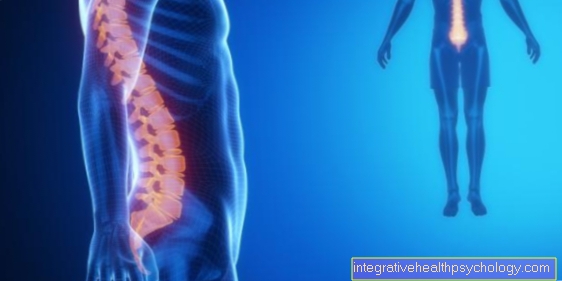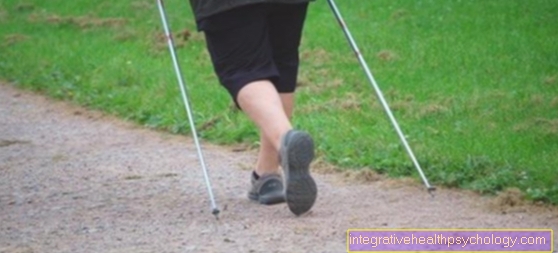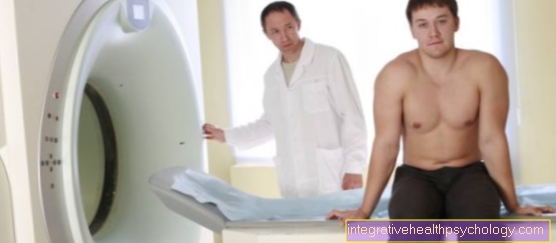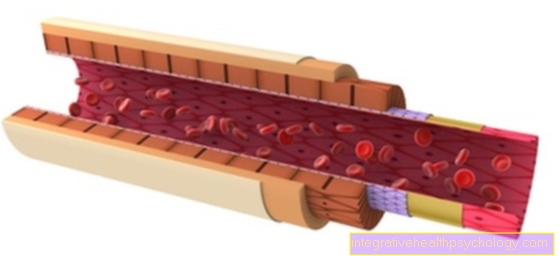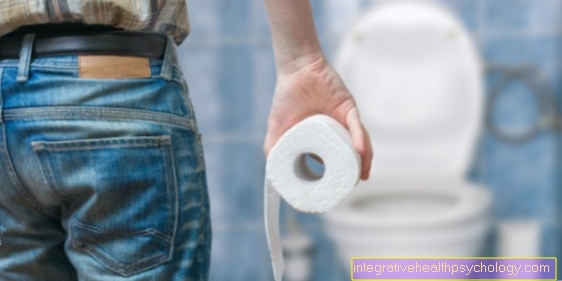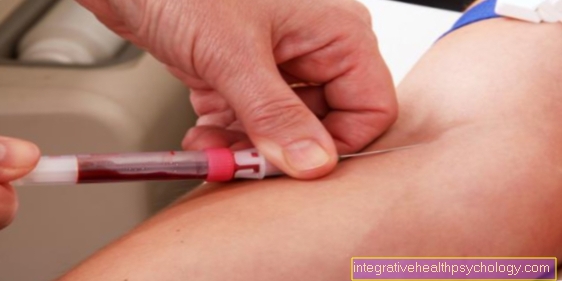Back training with equipment
introduction
The back is one of the most popular training goals for many athletes, and a fit back is also very important for your health. There are innumerable ways to train your back. You can use a variety of aids for this or rely on your own body weight. The choice of exercises and the number of possible aids are enormous. Therefore, some important devices for back training are now presented.

What kind of equipment is there for back training?
In addition to the exercise for training the back muscles, which does not require aids, there are many ways to use equipment and small parts for back training.
Dumbbell
The classic of the devices is the dumbbell. They are available in different weight classes from 0.5 kg to 64 kg (higher in competitive sports). Both arms and the back can be trained alternately or simultaneously. The advantage is that both weights have to be stabilized individually. This makes the training very intense and effective. Back exercises in which the dumbbells are used are bent over rows (one-armed and two-armed), side and front lifts, shoulder presses, deadlifts and “good mornings”.
Barbell
The barbell is also an often used training device. Like the dumbbell, the barbell is used in many exercises and can be loaded with any amount of weight. Barbell training also turns out to be very effective and intense.
Kettlebell
The kettlebell, like dumbbells and barbell, is well suited for intensive forms of training and muscle building training. This training device looks like a ball with a handle and there are different weight classes, usually in four kilogram increments. Exercises such as deadlifts, shoulder presses and rows are also performed with the kettlebell.
Sling trainer
The sling trainer is a device that does not require additional weights. It is attached to a hook or a bar and can be used for training with your own body weight. With this aid, for example, support exercises, rowing variants and pull-ups can be performed. In addition, the intensity of the training can be varied depending on the length of the lever.
Pillow and balance trainer
Cushions and balance trainers are also used for back training. They can be used well as a base and for increasing the level of difficulty. Exercises can be performed standing, kneeling, and lying and sitting. Light stabilization and stretching exercises can be performed with the help of a chair. This aid can be combined with other devices (dumbbells, etc.).
Pezi and exercise ball
The Pezi ball is an aid that can not only be used for training. In the office or at home at the desk, it serves as a seat replacement and ensures a more upright posture. As a training device for the back muscles, this ball can serve as a “wobbly” base for the “pool lift” or increase the difficulty for the “ski flyer”. In addition to vigorous training, the ball can also be used to stretch and mobilize the back muscles. The ball is available in different sizes so that training can take place optimally.
The smaller relative of the Pezi ball is the gymnastics ball, which is significantly smaller and can be more or less filled with air depending on the exercise and preference. It can be used for pulling and pushing exercises. Due to its versatility, it can be ideally combined with other devices to make the training more intensive and to bring variety.
Bars
Bars are used in different areas for training the back muscles. They can be used as pull-up bars on ceilings and walls or as a wooden stick for stabilization and mobilization exercises. The wooden stick is a particularly suitable means as a preparatory training for the introduction to the barbell, since the high-intensity exercises can be practiced in advance without weights.
Theraband
The Theraband is a very popular and common training device. Since it is very space-saving, it can be taken anywhere and is ideal for travel and on the go. This elastic rubber band is available in different colors and strengths.
In back training, it can be used for pull-ups, rows, deadlifts, side raises, front raises, shoulder presses, external and internal rotation, and other exercises. Above all, its user-friendliness and its low risk of injury make the Theraband a popular training device for at home.
The Theraband can be combined with the Pezi ball, pillows and balance trainers and other devices and is therefore very versatile. In addition to the Theraband, the Super and Miniband are also training devices that can be stretched. These two variants are also space-saving and easy to use. They can also be used for many different exercises and, like the Theraband, are easy to acquire.
You can do many exercises with the Theraband. Read more about this at: Theraband
Cable
The cable pull is similar to the Theraband, but it has no flexibility like the Theraband. A cable is mounted on weight plates and is used for training the entire body, but above all for back training.
Rowing in particular is often done on the cable puller or the tractor.You can train standing, sitting and lying down. Slides and wedges are mainly used to stabilize the lower back. These devices are mainly used in a lying position and have the advantage of exercising both legs independently of each other.
Fascia roll and fascia ball
The fascia roll, the fascia ball and "bones" are primarily used in regeneration after training.
Most people use these devices for fascia training and stretching exercises. However, you can also do a strengthening back training with these aids. The use of these small devices is a little more difficult and you should ask an expert for advice to be on the safe side.
Further information on this topic can be found at: Fascia roll and Fascia training
Flexibar
The "Flexibar" is a rod that has thickenings in the middle and at both ends. The thinner connections in between are not stiff, but flexible and pliable. By making the rod vibrate, an impulse arises that must be maintained. Controlling the impulse requires endurance and good coordination.
Small appliances
There are also hurdles, boxes, benches, rollers, blocks and other small devices that can be used for training. Finally, depending on the manufacturer, there are also machines and electrically controlled training devices for the back, but also for the entire body. The main distinction is between fitness equipment and medical training equipment. Otherwise there are only minor differences between the manufacturers.
What equipment can / should you buy for training at home?
If you want to do a training at home, you should think carefully about which purchases are really necessary and important.
There is usually not a lot of space or storage space available, especially for training at home. Therefore, the desired devices should be well chosen.
In order to cover the broadest possible area of application, it makes sense to choose a mixture of different devices. A pair of dumbbells with additional weights can be stowed away easily and enables intensive muscle building training.
Strength endurance can be trained well with a Theraband of the appropriate strength. In addition, you can do mobilization exercises and stretching exercises well with a Theraband. In addition, a "TRX" or sling trainer can bring the desired variety in the exercises and the intensity. Training with your own body weight is very easy on the joints and you only need a hook in the ceiling, or the TRX can also be anchored in the door.
A fascia roll complements the training equipment, as it can be used both for training and for regeneration. Of course, other devices such as the Pezi ball can also be brought in. Here, however, the individual preference and the training level are also decisive. Not every device is suitable for every person.
Further information on this topic can be found at: Back training at home








